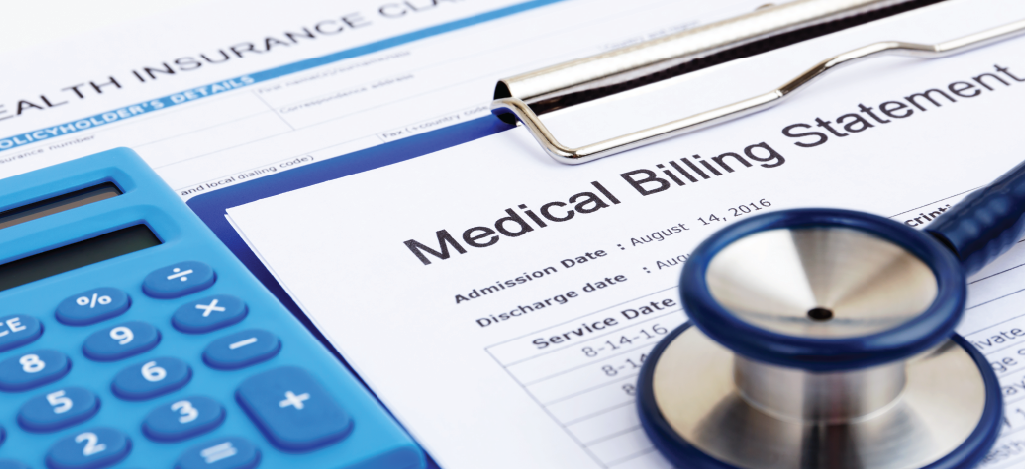Unravel the mystery of chargebacks with our simple and comprehensive explanation.
A chargeback is a common occurrence in the world of commerce, but many individuals may not fully understand what they entail. In this article, we will break down the concept of chargebacks, providing you with a clear and simple explanation of their key aspects. By the end of this article, you will have a better understanding of what chargebacks are, how they impact businesses, and how they can be prevented.
Understanding the Basics of Chargebacks

Chargebacks are a fundamental aspect of the financial world, serving as a vital dispute resolution mechanism provided by issuing banks or credit card companies to cardholders. This mechanism allows cardholders to request a refund of funds directly from their bank or credit card provider, providing them with a safety net when encountering issues with a transaction.
A chargeback initiation sets in motion a complex process involving multiple parties, each with their own unique role and responsibilities. Understanding the involvement of these parties is crucial to comprehending the chargeback process in its entirety.
Definition of a Chargeback
At its core, a chargeback is a consumer protection tool. It acts as a safety valve for cardholders, ensuring that they have recourse when they encounter problems with a transaction. Whether it's a case of fraud, goods not received, or dissatisfaction with a product or service, chargebacks provide cardholders with the ability to reclaim their funds.
Chargebacks are a separate process from refunds. While refunds are initiated by the merchant, chargebacks are initiated by the cardholder and involve the cardholder's bank or credit card provider.
The Parties Involved in a Chargeback
When it comes to chargebacks, several parties play a crucial role in the process. Understanding the responsibilities and contributions of each party is essential in comprehending how chargebacks are resolved.
1. Cardholder: The cardholder is the individual who holds the credit card or debit card and initiates the chargeback. They are the ones who identify a problem with a transaction and seek a refund of funds.
2. Merchant: The merchant is the entity that sold the goods or services to the cardholder. They are responsible for processing the transaction and delivering the product or service as agreed upon. In the chargeback process, the merchant is required to provide evidence to defend the transaction and refute the cardholder's claim.
3. Acquiring Bank: The acquiring bank, also known as the merchant bank, is the financial institution that maintains the merchant's account. They are responsible for processing the transactions made by the merchant and facilitating the transfer of funds. In the chargeback process, the acquiring bank reviews the evidence provided by the merchant and determines its validity.
4. Issuing Bank: The issuing bank is the financial institution that issued the credit card or debit card to the cardholder. They are responsible for handling the cardholder's account and managing the funds. In the chargeback process, the issuing bank reviews the cardholder's claim and the evidence provided by both the cardholder and the merchant. Based on this evaluation, they make a final decision regarding the chargeback.
Each party involved in the chargeback process plays a crucial role in determining the outcome of the dispute. The cardholder seeks a resolution, the merchant defends the transaction, and the acquiring and issuing banks evaluate the evidence to make an informed decision.
Understanding the basics of chargebacks and the parties involved is essential for both cardholders and merchants. By comprehending this process, individuals can navigate the complexities of disputes and ensure a fair resolution for all parties involved.
The Chargeback Process
Now that we have a basic understanding of chargebacks, let's delve into the process itself. Chargebacks typically involve several steps, each with its distinct purpose and actions required.
Initial Filing of a Chargeback
The chargeback process begins when the cardholder identifies an issue with a transaction and decides to initiate a chargeback. This could be due to various reasons, such as unauthorized transactions, defective goods, or services not rendered. The cardholder submits a dispute claim to their issuing bank, detailing the nature of the problem and providing any supporting evidence.
For example, imagine a cardholder named Sarah who recently made a purchase online for a new pair of shoes. However, when the package arrived, she discovered that the shoes were damaged and not as described on the website. Frustrated, Sarah decides to file a chargeback with her bank, explaining the situation and attaching photos of the damaged shoes as evidence.
Once the chargeback claim is submitted, it enters the initial review phase, where the issuing bank assesses the validity of the dispute and determines if it meets the necessary criteria for further investigation.
The Merchant's Response
Upon receiving the chargeback claim, the merchant is notified and given an opportunity to respond. Merchants are typically required to provide evidence that the transaction was legitimate, such as proof of delivery or customer communication records. The merchant's response is an essential factor in determining the success of their defense against the chargeback.
Continuing with Sarah's case, the online shoe retailer receives a notification about the chargeback filed by Sarah. They gather all relevant information related to the transaction, including order details, shipping records, and any communication they had with Sarah. In their response, they explain their side of the story, providing evidence that the shoes were in perfect condition when shipped and suggesting that the damage might have occurred during transit.
It is important for merchants to respond promptly and thoroughly, as a well-prepared response can significantly increase their chances of successfully disputing the chargeback.
Final Decision and Resolution
The issuing bank reviews the case and makes a final decision once the necessary information has been gathered from both the cardholder and the merchant. If the chargeback is deemed valid, the cardholder's account is refunded, and the merchant is liable for the disputed amount. Conversely, if the chargeback is deemed invalid, the cardholder's refund request is denied, and the merchant retains the funds.
In Sarah's case, the issuing bank carefully examines all the evidence provided by both parties. After a thorough review, they determine that the damage to the shoes is indeed a valid reason for a chargeback. As a result, Sarah's account is refunded, and the online shoe retailer is held responsible for the disputed amount.
It is worth noting that the chargeback process can be time-consuming and complex, with various factors influencing the final decision. Both the cardholder and the merchant must provide compelling evidence to support their claims, and the issuing bank plays a crucial role in evaluating the validity of the dispute.
Overall, understanding the chargeback process is essential for both cardholders and merchants, as it helps navigate the complexities of resolving transaction disputes and ensuring fair outcomes for all parties involved.
Reasons for a Chargeback

Chargebacks can occur due to various reasons, and it is crucial to understand the common root causes. By familiarizing ourselves with these reasons, we can gain insights into how chargebacks can be prevented and mitigated.
Fraudulent Transactions
One of the key factors leading to chargebacks is fraudulent transactions. Unauthorized use of credit card information or identity theft can result in cardholders disputing charges they did not authorize. Merchants must implement robust fraud prevention measures to reduce the prevalence of fraudulent transactions and subsequent chargeback disputes.
Customer Dissatisfaction
Another common reason for chargebacks is customer dissatisfaction. If a customer feels that the product or service they received does not meet their expectations or is defective, they may opt to initiate a chargeback instead of seeking a resolution directly with the merchant. Merchants should prioritize customer satisfaction and ensure clear communication to reduce the likelihood of chargebacks arising from unhappy customers.
Processing Errors
Processing errors can also be a contributing factor to chargebacks. Mistakes such as double-charging customers, incorrect billing amounts, or technical glitches can lead to cardholders disputing the charges. Merchants should implement robust payment processing systems and conduct regular audits to minimize the occurrence of processing errors.
Impact of a Chargeback on Businesses
Chargebacks can have a significant impact on businesses, both financially and in terms of reputation. Understanding these impacts is essential for merchants to develop effective strategies to mitigate their occurrence.
Financial Consequences of a Chargeback
One of the primary consequences of chargebacks is the financial loss incurred by merchants. When chargebacks are ruled in favor of the cardholder, the merchant is responsible for refunding the disputed amount, in addition to any associated chargeback fees. These financial losses can accumulate and significantly impact the bottom line of businesses, particularly for high-risk industries.
Reputational Damage
Chargebacks can also result in reputational damage for merchants. Multiple chargebacks indicate potential issues with products, services, or customer satisfaction, and can lead to negative reviews, decreased customer trust, and a tarnished brand image. Building a strong reputation and actively managing customer relationships are crucial in minimizing the long-term impact of chargebacks.
Preventing a Chargeback

While chargebacks cannot be completely eliminated, there are strategies that merchants can employ to reduce their occurrence. By adopting preventative measures, businesses can protect their financial stability and maintain positive customer relationships.
Best Practices for Merchants
Merchants can implement best practices to minimize chargebacks, such as clear and accurate product descriptions, responsive customer support, and transparent refund policies. By providing exceptional service, promptly addressing customer concerns, and ensuring transparent communication, merchants can reduce the likelihood of chargebacks resulting from customer dissatisfaction.
Role of Payment Processors in Chargeback Prevention
Payment processors also play a vital role in chargeback prevention. Payment processors can offer tools and services to help merchants identify potential fraudulent transactions, monitor chargeback ratios, and implement additional security measures. Integrating with reliable payment processors with robust fraud detection capabilities can significantly reduce the risk of chargebacks due to fraudulent activity.
Conclusion
In conclusion, chargebacks are an integral part of modern commerce that aim to protect consumers from fraudulent transactions and provide a means of dispute resolution. Understanding the fundamentals of chargebacks, their reasons, and their impact on businesses is crucial for both merchants and consumers. By implementing prevention strategies and maintaining open lines of communication with customers, businesses can effectively mitigate the occurrence and consequences of chargebacks, fostering a more secure and reliable payment ecosystem.
Going Forward with BillFlash
With BillFlash, practices can go further by optimizing their revenue cycle, efficiently collecting past-due A/R, and providing patients with a convenient and secure payment experience. With a user-friendly interface and industry experts available for all your billing, payments and collections needs, BillFlash is the perfect solution for small practices.

